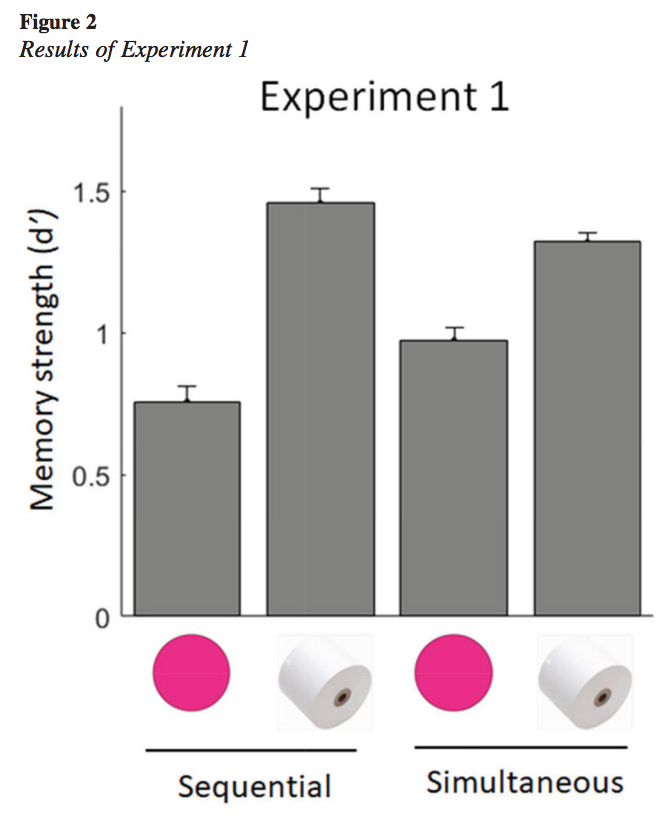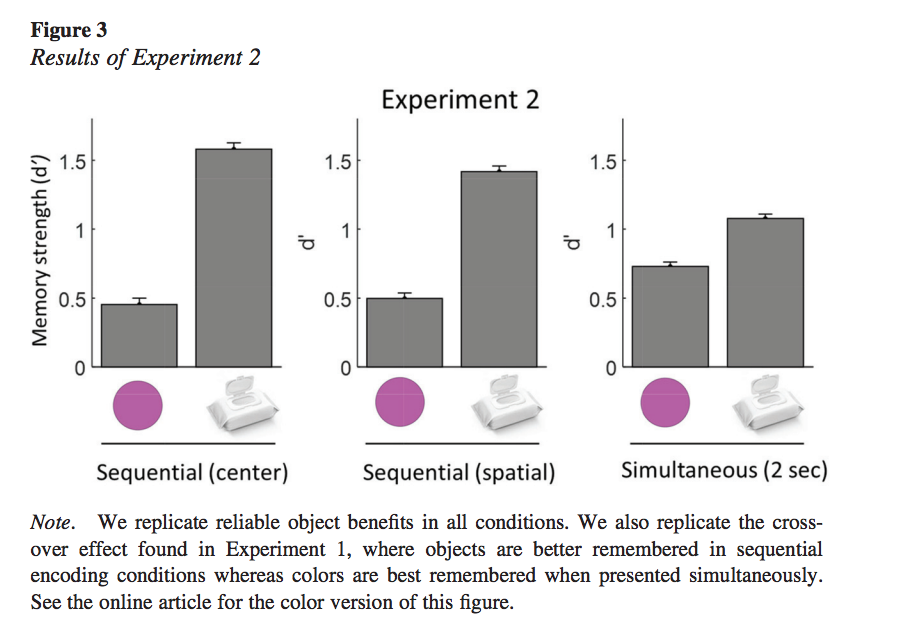Current Study
Current Study on the Levels of Processing Model
By: Ariel Birkholtz
A research study conducted in 2021 uses the levels of processing theory and applies it to meaning on real-world objects versus simple features. They are testing in this study what conditions lead to the strongest benefits for deeper, meaningful stimuli. They propose that when objects are encoded quickly and together at surface level, it leads to people treat them are meaningless. When people encode them at an individual deeper level, more meaning is associated with the object and therefore increase in memory performance. They test in this experiment whether real-world objects, colors, perceptually less-meaningful objects and fully scrambled objects benefit from deeper processing. They conducted four different experiments testing the benefit of processing models. Experiment 1 tests how the memory benefit for objects versus colors interacts with the coding strategy. People use strategies like ensemble encoding, grouping, and other strategies for memory encoding. They are hypothesizing in this experiment that simultaneous presentations rather than visual working memory are more effective at associating meaning for deeper processing to encode multiple similar stimuli. In contrast, processing color is more encouraged using ensemble processing (the ability to discriminate) and chunking of similar features. The results of the study indicate that objects were remembered better than colors regardless of encoding type. They found that objects were remembered better in sequential encoding (focus one-on-one) and colors in simultaneous encoding (parallel to each other). Experiment 2 tests whether spatial locations affect whether objects benefit from deeper processing. They do this in the same manner as experiment 1, using real-world objects. The results of this study replicate the findings of experiment 1, indicating that objects show benefits to sequential encoding and colors to simultaneous encoding. Experiments 3 and 4 look at overall object benefit and whether it is a result of stimulus complexity or knowledge/familiarity using lightly or fully scrambled objects to test this. The stimuli are labeled as more or less complex, and those as more complex are better remembered. This is regardless of the meaningfulness of the stimulus. They believe that lightly scrambled objects, which still hold some semblance of meaning, will benefit from deeper processing, while fully scrambled objects, bearing no semblance of meaning, will benefit more from parallel processing. The results of this study show what they found in experiments 1 and 2, and what they predicted for experiments 3 and 4. Objects that hold meaning benefit more from deeper processing, and therefore will have a stronger encoding and memory performance than those which hold no meaning. These objects benefit from being processed in different ways because of this. More experiments tested on the idea of levels of processing, or depth of processing, continue to show that memory is a complex tool that does not all benefit from the same processing types. The type of information being encoded determines working memory capacity and how much memory gets encoded.

